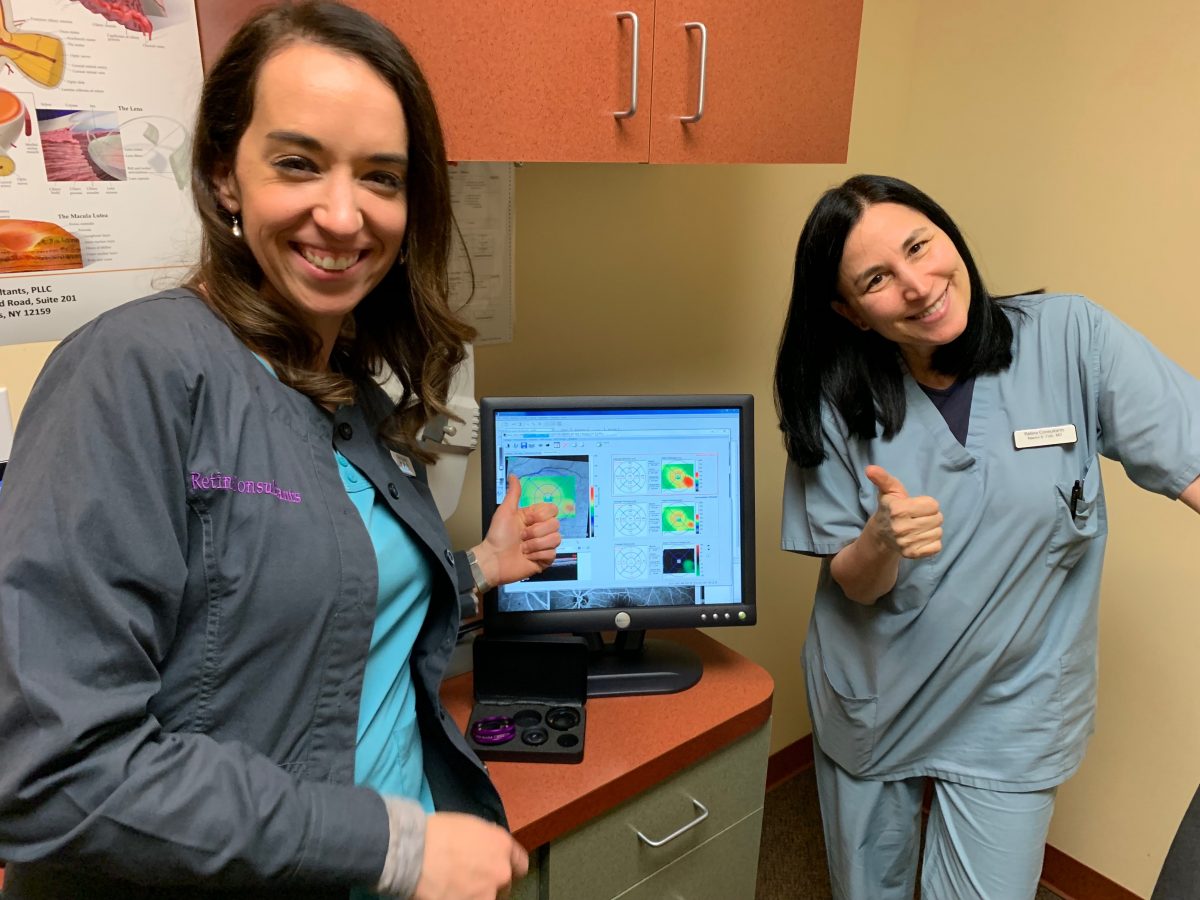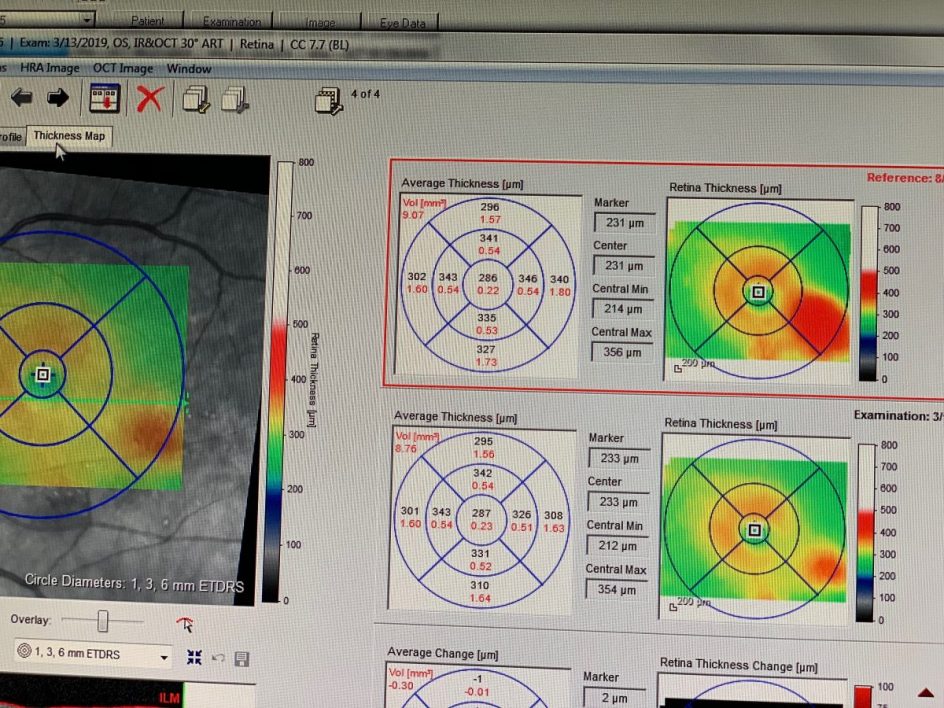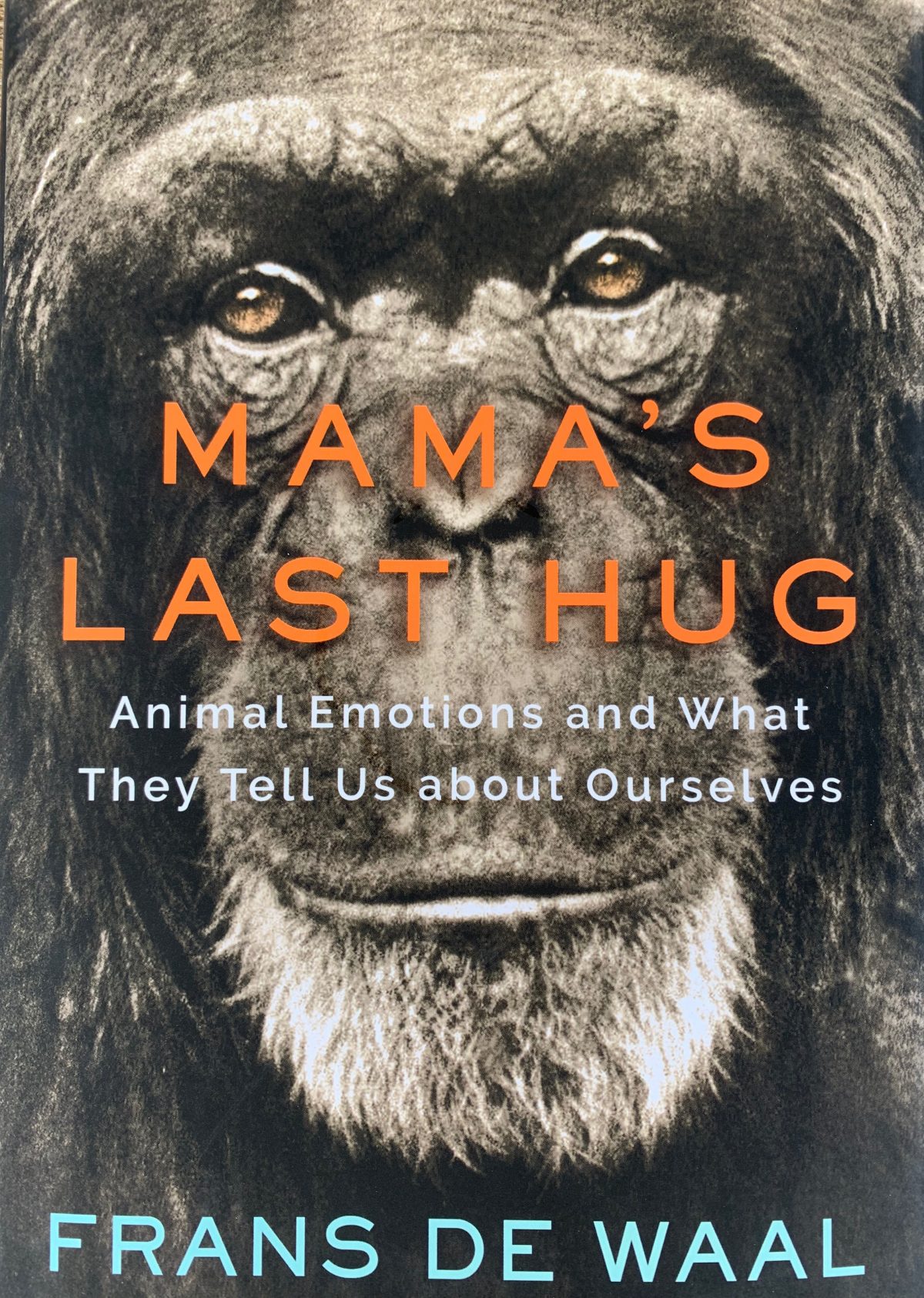(Lindsey, R.N., Dr. Naomi Falk,Md.)
It was almost a year ago that I stopped seeing the tops of letters in the books i was reading, I was only seeing half. The ophthalmologists said there was a serious swelling – ruptured or “leaking” vessels in my left eye, caused in part by diabetes and heart disease working in tandem.
Untreated, it would spread quickly and dramatically affect my sight.
Just a few years ago, this would have led to blindness. Dr. Naomi Falk from Retinal Consultants in Slingerland, outside of Albany, examined me. There were several options, including regular injections into the eye, laser surgery, special kinds of drops.
It was serious, Dr. Falk told me, the swelling had approached the eye and was affecting my vision. I didn’t care for the idea losing sight in one or both eyes, I am an avid reader, blogger and writer. People survive worse things, but we agreed on a course of treatment.
I wasn’t crazy about getting an injection in my eyes either, but I was prepared to do it.
I went to Slingerland, about two hours away four times, three for laser surgery.
When I went this morning, I was expecting another round of surgery.
But Dr. Falk said surgery was no longer necessary, at least for now. I’ve looked at these eye photos enough now to have my own sense of progress, and I could see how much the swelling had gone down.
(Images of my affected eye. Top right, image from last year. Bottom right, image from today, the red area is the swelling, much reduced and farther from the eye. Good news.)
The ruptures and swelling had moved well away from the retina, the center of the eye. My eyesight is very good, and she doesn’t need to see me for four months. It was great progress, she said. I am pleased and relieved. I’m glad I live in an age where blindness was not the likely outcome, but if the swelling had spread.
As I get older, there is more maintenance, I keep my diabetes well under control, and my cardiologist loves my “beautiful” tests. For years, I ignored the idea of taking care of myself, perhaps I didn’t really want to live. I love holistically, I see that western medicine can help my heart and my eyes, holistic medicine helps my spirit and my soul.
It’s easy to be overwhelmed by our medical system – pills, tests, referrals, expenses. But help helps. I wish everyone could afford the kind of care I got in Slingerland, in a just world, that will be possible.
Dr. Falk is impressive, skilled, empathetic and open. We have a lot of fun working together. Maria came to drive me – the eye drops leave me nearly blinded in sunlight.
I told her Dr. Falk was another good argument for female physicians. I always know what is happening and why, and I always feel like a human being, not a data point.
I don’t mean this in a glib or dismissive way, I know there are wonderful male doctors. I just need to feel I can talk with my doctors, and I need for them to know a bit about who I am. Most male doctors that I’ve seen don’t do that.
When Dr. Falk came into the examining room, she said right away, “oh, I suppose you’re going to want a picture of your eye, and of me as well. Okay, let’s do it.”
She pulled Lindsey, a nurse, into the photo.
We all started laughing. How often do you get to laugh with a big-deal doctor who has just saved my retina? Thanks, doc. I was surprised at how elated I was, it showed me how concerned I had been about my eyes.
We all celebrated a little bit in the operating and examining room. I remembered seeing those truncated letters in a book a year ago, and I wondered then if I would ever read again.
Guess what I’ll be doing tonight?
I can’t think of a better way to celebrate.
On the way home, Maria and I stopped at a Stewart’s Convenience Shop for our own celebration , we feasted on tuna salad sandwiches on wheat bread, a banana, carrots and celery, bottled water and some Lay’s 65 per cent fat-free potato chips that tasted like cardboard (she wolfed most of the bag down).
It was great.






